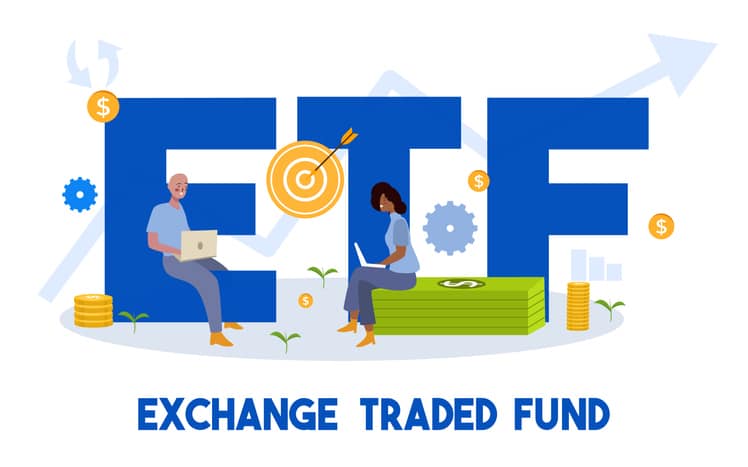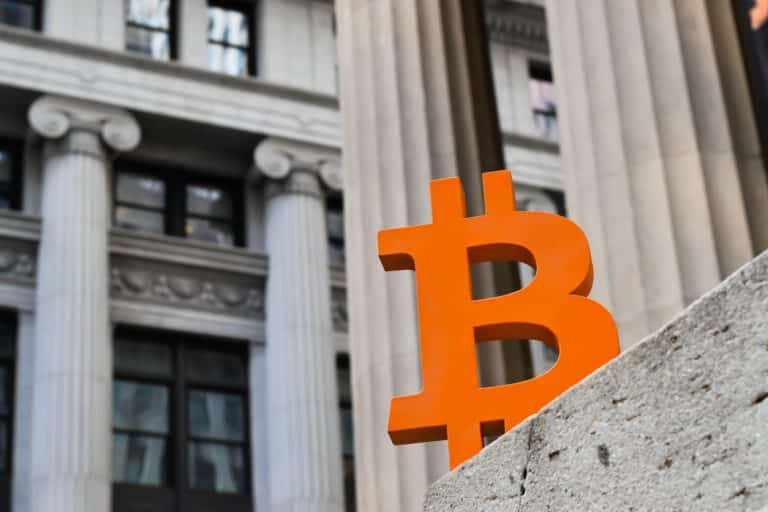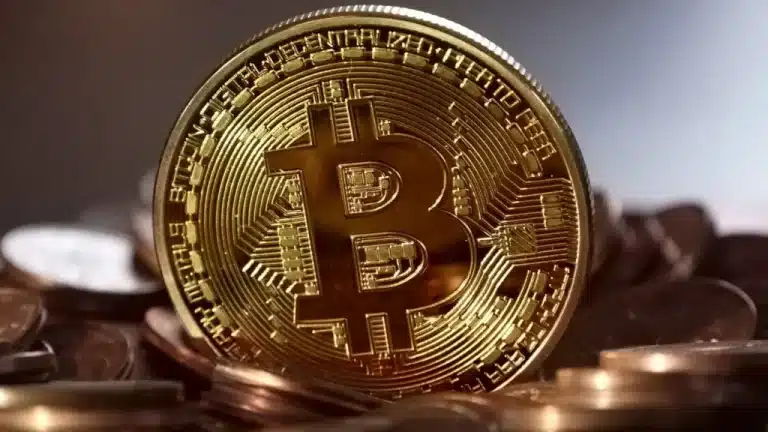Vanguard Launches Another Actively Managed Bond ETF
Vanguard, the world’s second-largest asset manager, is furthering its foray into active management with the launch of its second active bond exchange-traded fund (ETF), the Vanguard Core-Plus Bond ETF (VPLS). This move reflects the increasing popularity of ETFs as a preferred investment vehicle, particularly in the realm of active management, offering investors exposure to professional fund managers who navigate a vast universe of 65,000 fixed-income securities at a relatively lower cost compared to traditional mutual funds. Vanguard’s initiative responds to the surge in demand for active bond ETFs, providing investors access to seasoned managers who can make nuanced investment decisions in the face of a challenging macroeconomic environment. The newly launched ETF is the first of two planned for 2023, with a third expected later in the month, showcasing Vanguard’s commitment to diversifying its offerings and catering to evolving investor preferences.
The Vanguard Core-Plus Bond ETF and its counterpart, the Vanguard Core Bond ETF (VCRB), set to launch mid-month, will bolster Vanguard’s suite of active bond ETFs to three. The firm’s first active bond ETF, the Vanguard Ultra Short Bond ETF, launched in April 2021 and has since amassed $4.3 billion in assets. The move into active bond ETFs aligns with Vanguard’s recognition of the appeal of ETFs due to their simplicity in management and lower fees compared to traditional mutual funds.
The two new ETFs will be managed by the same team overseeing their mutual fund counterparts. Vanguard Core-Plus Bond ETF will feature an expense ratio of 0.20%, compared with 0.30% for the investor share class of the open-end fund, while Vanguard Core Bond ETF will have an expense ratio of 0.10%, versus 0.20% for the investor share class of the mutual fund. The Admiral share classes of both funds, popular among financial advisors, will be priced the same as the ETFs.
Harbor Capital Advisors Launches Long-Short Equity ETF (LSEQ)
Harbor Capital Advisors has introduced the Harbor Long-Short Equity ETF (LSEQ) to its fund lineup. The ETF, listed on the NYSE Arca, focuses on providing equity exposure with an emphasis on downside mitigation and diversification benefits. LSEQ features both long and short equity positions, with their weighting determined by sub-advisor Disciplined Alpha’s macro regime analysis. The fund’s net exposure generally ranges from 40% to 60% long equity, but it may occasionally have exposure up to 150% long. Disciplined Alpha, known for its disciplined quantitative investment process and experience in shorting securities, serves as the sub-advisor for LSEQ, aiming to offer diversification in a portfolio with lower beta to traditional long-only equity investments. The fund’s gross expense ratio is 176 basis points.
TLT Big Move in November
In November, long-term bond ETFs, such as the iShares 20+ Year US Treasury ETF (TLT), experienced significant gains of 9% or more as yields dropped, moving in the opposite direction as bond prices. Investors who were willing to take on more risk with ultra-rate-sensitive bond ETFs like the Pimco 25+ Year Zero Coupon US Treasury Index ETF (ZROZ) enjoyed even more substantial price gains, with a whopping 15% increase in November. This performance outpaced the stock market’s gain of 10%, as measured by the SPDR S&P 500 ETF Trust (SPY).
The Rise of Crypto ETFs: Weighing the Pros and Cons
The world of finance has seen a significant shift in recent years with the rise of cryptocurrencies. As digital assets like Bitcoin and Ethereum gain traction, the traditional investment landscape is evolving to accommodate this new asset class. One of the latest innovations in this space is the introduction of crypto exchange-traded funds (ETFs). But what exactly are crypto ETFs, and what are their advantages and disadvantages?
What are Crypto ETFs?
Crypto ETFs are investment funds that track the price of cryptocurrencies. Instead of buying cryptocurrencies directly, investors can purchase shares of an ETF that represents a basket of different cryptocurrencies or a specific crypto asset. These ETFs are traded on traditional stock exchanges, making them accessible to a broader range of investors.
The Advantages of Crypto ETFs
- Accessibility: Crypto ETFs provide a bridge between the traditional financial system and the world of cryptocurrencies. Investors who are unfamiliar with the process of buying and storing cryptocurrencies can easily invest in them through ETFs using their regular brokerage accounts.
- Diversification: Some crypto ETFs offer exposure to a basket of cryptocurrencies, allowing investors to diversify their holdings and reduce the risk associated with individual crypto assets.
- Security: ETFs eliminate the need for investors to manage private keys or worry about the security of cryptocurrency exchanges. The funds are managed by professional institutions that ensure the safe custody of the underlying assets.
- Liquidity: Being traded on major stock exchanges, crypto ETFs offer higher liquidity compared to some cryptocurrency exchanges, especially during volatile market conditions.
- Management Fees: Like all ETFs, crypto ETFs come with management fees, which can eat into potential returns over time.
- Not Truly Owning the Asset: Investors in crypto ETFs own shares of the fund, not the actual cryptocurrencies. This means they cannot use these assets for transactions or in decentralized applications.
- Potential Tracking Errors: There might be discrepancies between the performance of the ETF and the actual performance of the underlying crypto assets.
- Regulatory Concerns: The regulatory environment for crypto ETFs is still evolving. Changes in regulations can impact the performance and viability of these funds.
SEC’s Early Public Comment Period Raises Hope for Spot Bitcoin ETF Approval
The Securities and Exchange Commission (SEC) has initiated an earlier-than-expected public comment period for proposed spot Bitcoin (BTC) ETFs, fueling optimism about their potential approval. The SEC’s move pertains to the proposed Franklin Bitcoin ETF and Hashdex Bitcoin Futures ETF funds, with analysts speculating on a potential acceleration of the SEC’s timeline for approving a “spotcoin” ETF. Historically, the SEC has expressed concerns over market manipulation and investor protection, leading to denials or delays in approving spotcoin ETFs. However, a landmark lawsuit loss to Grayscale Investments in August prompted closer collaboration with firms, and many believe the SEC might approve multiple applications simultaneously to prevent a first-mover advantage.
The SEC’s decision to initiate a comment period for Hashdex is seen as a move to align applicants for potential approval by January 10, 2024. Franklin Templeton, a firm with around $1.5 trillion in assets under management, filed for a spot Bitcoin ETF in October, and its recent amendment to the prospectus indicates it has addressed SEC’s questions and concerns. The SEC is currently evaluating 13 applications for spot BTC ETFs, and the optimism surrounding their potential approval has contributed to a recent rally in crypto markets.
Bitcoin Designate Nears $40K With Fed, ETF At Play
Because the ever-altering world of digital currencies continues to gain headlines, Bitcoin appears to be like to be inching closer to a important milestone. The premier cryptocurrency is nearing the $40,000 designate, its best likely cost in newest weeks. This surge in brand, influenced both by anticipated actions from the Federal Reserve and the speculated introduction of a Bitcoin Switch Traded Fund (ETF), has drawn renewed consideration globally. This article analyses the rather about a elements contributing to Bitcoin’s stamp bullish speed, alongside the capability impacts on its future trajectory.
Price: AUM denotes Assets Below Administration.
As we wrap up, the cost of Bitcoin flirts with the $40K designate – a fee it has now not considered quickly. With the Federal Reserve’s impending fee choices looming within the backdrop and increased hypothesis spherical likely US Bitcoin ETFs, the cryptocurrency market is exhibiting renewed vitality. Tighter monetary policies might per chance trigger some volatility within the transient, yet the capability for a Bitcoin ETF might per chance release contemporary inflows. The fluctuation of the market and the alternatives to reach wait on care for important vitality over the instantaneous trajectory of Bitcoin. Regardless, Bitcoin’s resilience reinforces its attract within the face of dynamic financial eventualities. It remains to be considered if the continuing concerns will solidify Bitcoin’s disclose as a mainstay within the monetary ecosystem or as soon as again beef up its infamous volatility. Till then, stakeholders and spectators alike are left to see because the cryptocurrency saga continues to unfold.
Exploring the Factors Riding Bitcoin Costs Stop to $40K Price: The Role of Federal Reserve and ETFs
Because the cost of Bitcoin edges closer to the $40,000 designate, it be positive that rather about a market elements are playing a important role in utilizing this surge. Primarily, the actions of the Federal Reserve in placing ahead low-hobby charges own triggered increased funding in Bitcoin as consumers survey increased returns. Moreover, the rising hobby and subsequent initiating of a substantial replace of Bitcoin Switch-Traded Funds (ETFs) own contributed to the digital currency’s upward pattern. These funds present yet every other for a broader fluctuate of consumers to brand exposure to Bitcoin without the complexities of relate cryptocurrency ownership. Checklist of Predominant Factors:- Federal Reserve’s Coverage: The Accommodative monetary protection, including low-hobby charges and quantitative easing, own deterred outmoded savings and bonds, pushing consumers in the direction of excessive-yield sources like Bitcoin.
- Role of ETFs: ETFs bring increased legitimacy, compliance, and transparency to the Bitcoin world, attracting institutional consumers.
| ETF Title | Launch Date | Most modern AUM |
|---|---|---|
| ProShares Bitcoin ETF | October 2021 | $1 Billion |
| Valkyrie Bitcoin ETF | October 2021 | $10 Million |
Bold Prediction: Bitcoin Set to Skyrocket to $100,000 by 2024
This scarcity is one of the key factors driving the value of Bitcoin. As the supply becomes more limited, the demand for Bitcoin increases, leading to price appreciation. The previous two halving events, which occurred in 2012 and 2016, were followed by significant price rallies. In 2012, the price of Bitcoin increased from around $12 to over $650 within a year. Similarly, in 2016, the price surged from around $650 to nearly $20,000 in less than two years.
Long-established Chartered’s forecast of $100,000 by the end of 2024 is based on the assumption that history will repeat itself and that the next halving event will trigger another bull run. However, it is important to note that the cryptocurrency market is highly volatile and unpredictable. While Long-established Chartered’s prediction is based on careful analysis and market trends, there are no guarantees in the world of cryptocurrencies.
Goldman Sachs Launches First Funds Through ETF Accelerator
Goldman Sachs has unveiled the first exchange-traded funds (ETFs) launched through its ETF Accelerator platform, a digital initiative facilitating efficient ETF launches, listings, and management. The three actively managed ETFs, introduced by Brandes Investment Partners, include the Brandes U.S. Small-Mid Cap Value ETF (BSMC), the Brandes U.S. Value ETF (BUSA), and the Brandes International ETF (BINV). These funds aim for long-term capital appreciation by investing in undervalued companies identified by Brandes’ investment committees.
The Goldman Sachs ETF Accelerator, launched in November 2022, addresses client demand and offers comprehensive services covering fund launch, integration into the ETF ecosystem, portfolio implementation, and capital markets solutions. Lisa Mantil, Global Head of Goldman Sachs ETF Accelerator, emphasized the platform’s commitment to supporting clients’ ambitions in the ETF industry, leveraging the firm’s extensive ETF expertise, relationships, and advanced technology capabilities.
Record-Breaking Year for ETF Launches
2023 has been a standout year for the launch of new ETFs. The market is on track to surpass the all-time annual record of 475 new ETFs set in 2021.
Potential U.S. Spot BTC ETF Approval
PMorgan has recently indicated that the approval of a U.S. spot BTC ETF could be imminent, likely within the next few months. The anticipation of such a regulatory milestone has created a buzz in the investment community, as it would mark a significant advancement in the acceptance and institutionalization of Bitcoin and other cryptocurrencies.








